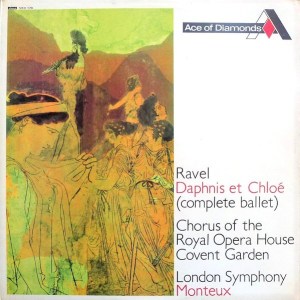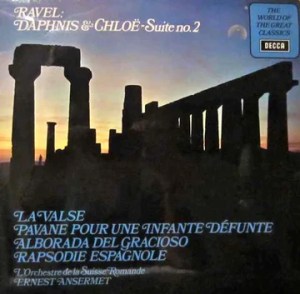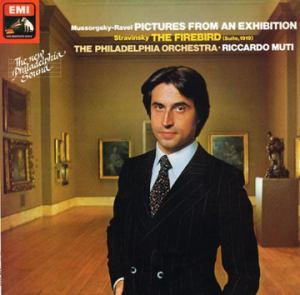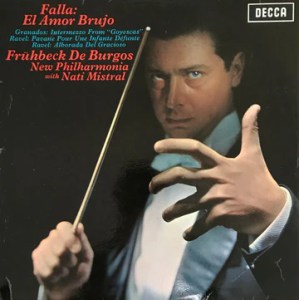More of the music of Maurice Ravel (1875-1937)
More Classical Masterpieces

- Boasting excellent Double Plus (A++) grades or close to them throughout, this vintage Decca Ace of Diamonds pressing was giving us the sound we were looking for on Ravel’s complete Masterpiece
- The sound is big and rich, lively and open, with tons of depth and huge climaxes that hold together (particularly on side one)
- The voices in the chorus are clear, natural, separate and full-bodied — this is the hallmark of a vintage Golden Age recording: naturalness
- We know of no other recording of the work that does as good a job of capturing such a large orchestra and chorus
- Of course, Monteux is a master of the French idiom – his performance of the complete ballet is definitive in our opinion
- Even though properly-cleaned, properly-pressed, properly-mastered original Decca pressings are the ones that win our shootouts, we guarantee this 60s reissue will easily beat any copy of the album you can find, at any price
- There are about 150 orchestral recordings we have found to offer the best performances with the highest quality sound. As card-carrying audiophiles, we naturally insist on both. This record is certainly deserving of a place on that list.
Both sides here are BIG, with the space and depth of the wonderful Kingsway Hall that the LSO perform in. John Culshaw produced the album, which surely accounts for the huge size and space, not to mention quality, of the recording. The sound is dynamic and tonally correct throughout.





 Hot Stamper Pressings of Living Stereo Titles Available Now
Hot Stamper Pressings of Living Stereo Titles Available Now Even twenty years ago reviewers noted that tracks on compilations such as this often had better sound than the albums from which they were taken, proof that they were listening critically and comparing pressings.
Even twenty years ago reviewers noted that tracks on compilations such as this often had better sound than the albums from which they were taken, proof that they were listening critically and comparing pressings.

